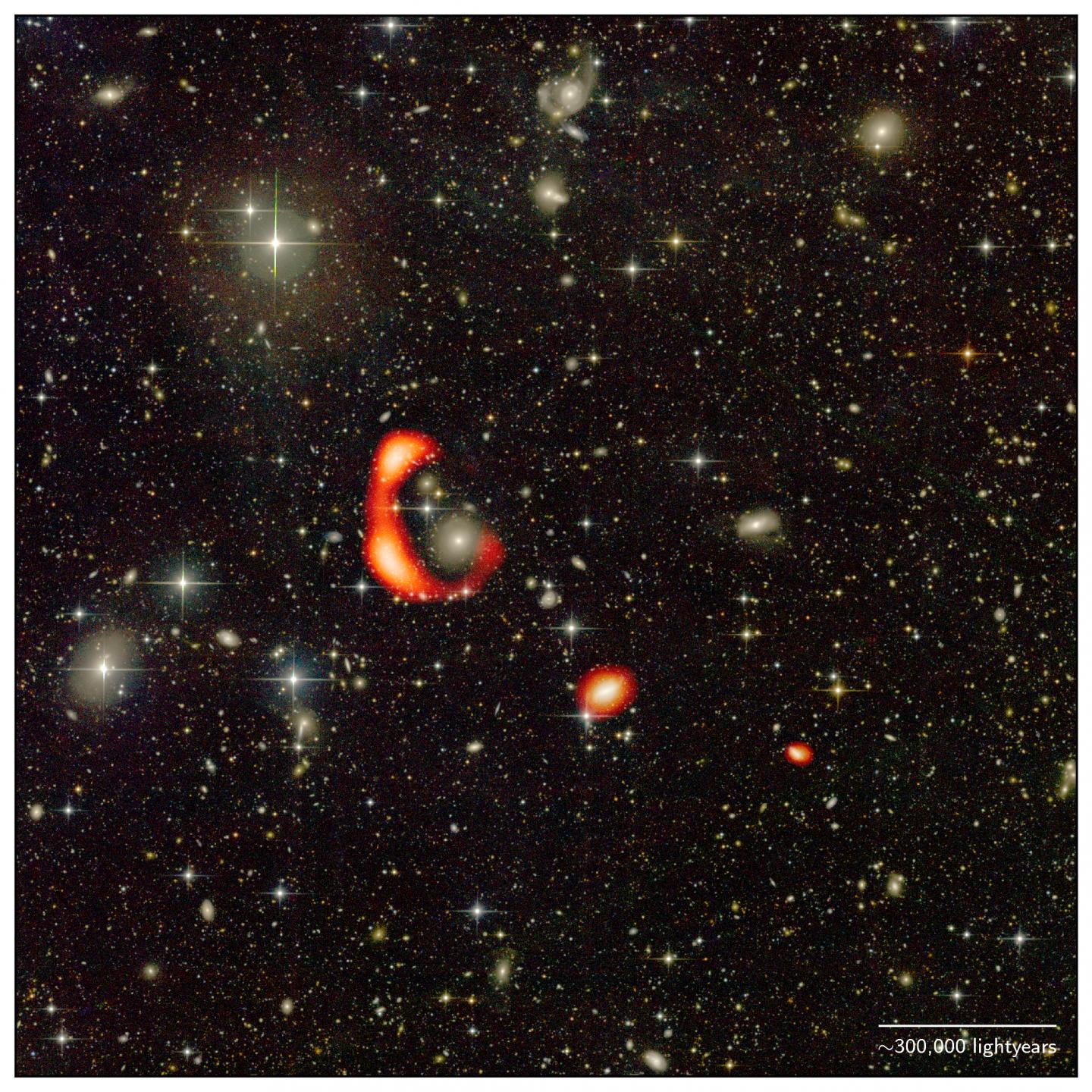Neutral hydrogen emits radio waves at a wavelength of about 21cm. This radiation from neutral hydrogen atoms has allowed radio astronomers to map the amount and distribution of neutral hydrogen gas in our Milky Way galaxy and in other galaxies in the Universe. Typically, large reservoirs of neutral hydrogen gas are found in galaxies which are actively forming new stars. However, despite showing no signs of active star formation the galaxy AGC 203001 was known to have large amounts of hydrogen, although its exact distribution was not known.
Researchers used the Giant Metrewave Radio Telescope near Pune, India, to conduct high-resolution radio observation of this galaxy to find out where in the galaxy this gas lies. It isn't inside at all. The neutral hydrogen is distributed in the form of a large off-centered ring extending much beyond the optical extent of this galaxy.
More puzzlingly, the astronomers found that the existing optical images of the ring showed no sign of it containing stars. There isstarlight associated with the hydrogen ring.

Optical image from the CFHT telescope with the distribution of neutral hydrogen in the form of a large ring shown in red as observed by the GMRT. Credit: O. Bait (NCRA-TIFR/GMRT), Duc (ObAS/CFHT)
There is only one other such known system with such a large neutral hydrogen ring the speculate question is. how did it happen? Galaxy-galaxy collisions are thought to lead to the formation of such off-centered rings around galaxies. However, such rings also generally contain stars.
The next step is to map the neutral hydrogen around several more similar galaxies. If some of them also show rings like this, it should help us to better understand the formation mechanism behind such rare rings.






Comments